Home Renovation and Maintenance Services
Maintenance Plans
Our monthly maintenance plans ensure your home stays in perfect condition, saving you time and money on unexpected repairs.
Choose Your Plan
Bronze
- 2x Trips per Year
- 2 Hrs of Honey To Do List
- Clean Gutters
- Change HVAC Filters
- Int & Ext Light Bulb and Battery Change
- Home Inspections
Platinum
- Everything on Gold Package
- 6x Trip per Year
- Pressure Washing
- 10% Discounted Add-ons
Gold
- Everything on Bronze Package
- 4x Trips per Year
- HVAC unit PM
- Dryer Vent Cleaning
- Pest Control
*Pricing is subject to change due to size and scope of home
Add-Ons
Services
Cost/Per Month
Services Cost/Per Month
Cost/Per Month
Services
HVAC Filter Replacement
To ensure the HVAC system operates efficiently and maintains indoor air quality by regularly replacing air filters.
- Confirm the correct filter size and type for the HVAC system.
- Locate and remove old filters.
- Clean the filter compartments to remove dust and debris.
- Install new filters, ensuring correct fit and direction.
- Turn the HVAC system back on and verify proper operation.
- Record the date and details of the service.
- Provide the Customer with a brief report of the work performed and any recommendations.
Gutter Cleaning
To ensure the proper functioning of the gutter system by removing debris and preventing water damage.
- Safely set up ladders and secure work area.
- Remove all visible debris (leaves, twigs, dirt) from gutters by hand or using appropriate tools.
- Check and clear downspouts to ensure unobstructed water flow.
- Inspect gutters and downspouts for any damage or issues (e.g., leaks, corrosion) and report findings to the Customer.
- Collect and properly dispose of all debris removed from gutters.
- Record the date and details of the gutter cleaning service.
Bulb Replacement
To ensure optimal lighting and functionality of safety devices in the home by regularly replacing light bulbs and batteries.
- Identify the types and quantities of light bulbs and batteries required (interior and exterior lights, smoke detectors, carbon monoxide detectors, etc.).
- Safely access light fixtures using appropriate ladders and tools.
- Remove and dispose of old or burnt-out light bulbs.
- Install new light bulbs, ensuring correct type and wattage.
- Test each light fixture to confirm proper operation.
- Record the date and details of the light bulb and battery changes.
Battery Replacement
To ensure optimal lighting and functionality of safety devices in the home by regularly replacing light bulbs and batteries.
- Identify the types and quantities of light bulbs and batteries required (interior and exterior lights, smoke detectors, carbon monoxide detectors, etc.).
- Locate devices needing battery replacement
- Remove old batteries and properly dispose of them.
- Install new batteries, ensuring the correct orientation.
- Test each device to confirm proper functionality.
- Record the date and details of the light bulb and battery changes.
Honey To Do List
To assist the Customer with various small home repair and maintenance tasks as needed, ensuring the home remains in good condition and promptly addressing any minor issues.
- Obtain a detailed list of tasks the Customer wants to be completed (the “Honey-Do List”).
- Minor plumbing repairs
- Electrical repairs
- Painting touch-ups or small painting projects
- Furniture assembly or repair
- Hanging pictures, shelves, or curtain rods
- Caulking and sealing in bathrooms and kitchens
- Fixing door hinges, handles, and locks
- Small carpentry tasks
- Adjusting or repairing cabinet doors and drawer
Home Inspection
To provide a thorough inspection of the home to identify any maintenance issues or potential problems that need attention, ensuring the home is safe and in good condition.
- Conduct a thorough visual examination of all inspection points.
- Take detailed notes and photographs of any issues or areas of concern.
- Compile a comprehensive inspection report detailing the findings.
- Review the inspection report with the Customer.
- Discuss recommended actions and potential next steps for any identified issues.
Dryer Vent Cleaning
To ensure the safe and efficient operation of the dryer by removing lint buildup from the dryer vent, reducing fire hazards and improving drying performance.
- Perform a preliminary inspection of the dryer vent system, both inside and outside the home.
- Disconnect the dryer from its power source and, Use specialized tools to remove lint and debris from the vent line and ducts.
- Check and clean the dryer lint trap thoroughly.
- Inspect the vent and ducts after cleaning to ensure there are no blockages or damage that could restrict airflow.
- Ensure the dryer is properly reconnected to the power source and, Test the dryer by running it for a short cycle to confirm that air is flowing.
HVAC Unit Preventative Maintenance
To ensure the HVAC system is operating efficiently and reliably by performing regular preventive maintenance, helping to extend the life of the equipment and improve indoor air quality.
- Conduct a visual inspection of the HVAC system, including both heating and cooling components.
- Check the condition of the air filters, ducts, vents, and registers.
- Assess the condition of electrical connections, wiring, and components.
- Inspect the blower assembly, including the blower wheel, motor, and housing.
- Clean and/or replace air filters as needed.
- Clean the condenser and evaporator coils to remove dust and debris.
- Clean and inspect the condensate drain and pan to prevent clogs and water damage.
- Clean the blower assembly and check for any debris that may obstruct airflow.
- Lubricate moving parts as needed (e.g., motors, bearings) to reduce friction and wear.
- Check and adjust the system’s operating pressures and temperatures to manufacturer specifications.
- Adjust and calibrate the thermostat as necessary.
- Test for proper cycling and temperature control.
- Record the date and details of the maintenance service.
Pest Control
To effectively manage and eliminate pest infestations through regular inspections, treatments, and follow-up visits, ensuring the home remains safe, healthy, and free from pests.
- Conduct a comprehensive inspection of the home, both interior and exterior, to identify signs of pest activity.
- Determine the type of pests present and the severity of the infestation.
- Develop a customized treatment plan based on the inspection findings and pest identification.
- Apply targeted treatments to affected areas, including:
- Interior treatments: Application of insecticides, baits, traps, and other control measures in key areas (e.g., kitchen, bathroom, basement).
- Exterior treatments: Perimeter treatments, barrier sprays, and bait stations around the home’s foundation and entry points.
Pressure Washing
To enhance the appearance and longevity of various surfaces around the home by removing dirt, grime, mold, mildew, and other contaminants through professional pressure washing.
- Protect adjacent areas and objects that do not require cleaning (e.g., plants, outdoor furniture) by covering them.
- Apply appropriate cleaning agents to surfaces as needed to help break down dirt and contaminants.
- Use the pressure washer to clean designated areas.
- Thoroughly rinse off any cleaning agents and residual debris from all treated surfaces.
- Conduct a final inspection of the cleaned areas to ensure all dirt and contaminants have been effectively removed.
- Properly dispose of any debris or waste generated during the cleaning process.
Window Washing
To ensure clean, clear, and streak-free windows, enhancing the appearance and allowing more natural light to enter the home.
Exterior Window Washing:
- Gently rinse windows with water to remove loose dirt and debris.
- Apply a suitable cleaning solution to the windows to break down grime and stains.
- Use a squeegee to clean the windows, ensuring a streak-free finish.
Interior Window Washing:
- Apply a suitable cleaning solution to the interior surfaces of the windows.
- Use a squeegee or microfiber cloth to clean the windows.
- Dry the edges and window frames with a lint-free cloth to prevent drips.
Screen and Track Cleaning:
- Remove and clean window screens, gently scrubbing with a brush and cleaning solution, then rinse and dry before reinstallation.
- Clean the window tracks and sills, removing dirt, dust, and debris with a brush or vacuum, and wiping down with a cloth.
HVAC Duct Cleaning
Your content goes here. Edit or remove this text inline or in the module Content settings. You can also style every aspect of this content in the module Design settings and even apply custom CSS to this text in the module Advanced settings.
Leaf Removal
To maintain a clean and tidy outdoor environment by removing fallen leaves from the yard, walkways, driveways, and other outdoor areas.
- Use leaf blowers, rakes, or other suitable tools to gather leaves into piles.
- Collect leaves from the yard, flower beds, walkways, driveways, and other designated areas.
- Transfer collected leaves onto tarps or into waste bags for disposal or composting.
- Pay special attention to clearing leaves from gutters, drains, and other areas prone to blockages.
- Transport leaves to designated waste collection areas or compost bins.
- Blow or sweep off walkways, driveways, patios, and other hard surfaces to leave them clean and leaf-free.
Hanging Holiday Lights
To enhance the festive spirit and curb appeal of the property by professionally installing holiday lights and decorations.
- Discuss the Customer’s preferences, design ideas, and specific areas for lighting installation.
- Create a lighting design plan, considering factors such as architectural features, landscaping, and power sources.
- Carefully install holiday lights and decorations on designated areas of the home, such as roofs, eaves, windows, trees, and shrubs.
- Use appropriate clips, hooks, or fasteners to secure lights and prevent damage to the property.
- Test all lights and decorations to ensure they are working correctly and securely installed.
- Set up timers or smart controls for automated lighting schedules to conserve energy and create desired lighting effects.
Trash Can Cleaning
To maintain a clean and hygienic environment by regularly cleaning and sanitizing trash cans, reducing odors, preventing bacterial growth, and ensuring a fresh and tidy appearance.
- Empty the trash cans and remove any loose debris or garbage.
- Rinse out the trash cans with water to remove excess residue.
- Apply a suitable cleaning solution or detergent to the interior and exterior of the trash cans.
- Use a pressure washer or scrub brush to agitate and clean all surfaces thoroughly.
- Pay special attention to the lid, handles, and bottom of the trash can.
- Apply a disinfectant or sanitizer to kill germs, bacteria, and odors.
- Sprinkle baking soda or use a natural deodorizing agent to neutralize odors.
Mosquito Control
To reduce mosquito populations and minimize mosquito activity around the property, creating a more comfortable outdoor environment for the Customer.
- Apply mosquito control products to targeted areas, including:
- Outdoor living spaces (patios, decks, outdoor seating areas)
- Landscaped areas (gardens, flower beds, shrubs)
- Standing water sources (birdbaths, ponds, stagnant pools)
- Perimeter areas near the home and property boundaries
- Use barrier sprays for immediate mosquito control and larvicides to target mosquito larvae in breeding sites.
- Provide guidelines for staying clear of treated areas until the products have dried or settled, as recommended by the manufacturer.
Debris Haul Off
To remove and dispose of unwanted debris, junk, or large items from the property, ensuring a clean and clutter-free environment for the Customer.
- Identify the specific items or areas requiring removal, such as old furniture, appliances, yard waste, construction debris, or general clutter.
- Safely lift, load, and transport items for removal, following proper lifting techniques and safety protocols.
- Dispose of items responsibly, recycling materials when possible and utilizing proper waste disposal facilities.
- Utilize equipment such as hand trucks, straps, or lifting aids for heavy items to prevent injuries and property damage.
- Sweep or clean up any debris or residue left behind after item removal.
- We offer two level of services, You load and We Load.

